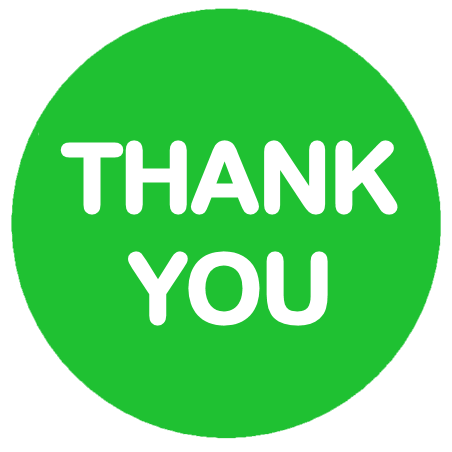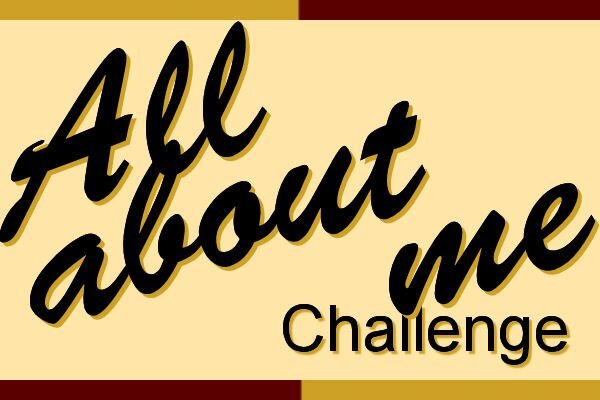-
Posts
5,841 -
Joined
-
Last visited
-
Days Won
17
Everything posted by Cassel
-
@Jenny MacKay Oh. I never thought of the fact that earlier versions would not be able to open the file. I should have saved it in .psd format for more versatility. @Carolyn Rye That is so nice to have such a photo! Was there already a shadow on the frame? It looks very fuzzy and different from the other shadows on the layout. @Cheryle Becker What a contagious smile that little guy has! Great work on using the "paint splashes" (if that is what they are called). @Ann Seeber Yes, Anna Aspen offers abr files that she probably expect to be used in Adobe products but you can import them in PSP, and use them in Affinity. So go ahead and use them! Your second project looks great. I love that symbol on top. @Rene Marker "For me the perfect program would have the best of both programs!" isn't that right!? I guess that is a good reason to have different tools at our disposal. What designer's kit did you use for your second project? I am curious. As for the Color picker, I am also struggling with it as I keep trying to use it LIKE PSP. I guess it is a reflex I need to change! @Sharla Glad to see you on board. Good sandwich. I gather you are not too fond of pickles? @Daniel Hess At first glance, I thought you used the Out-of-bound technique but then, looking further, I think you added the dog to the image. Is that right? You did a great job either way! @Saara Those scrapbook pages are perfect to showcase your work. Doesn't it make them pop? Over time, maybe you can also want to learn PSP 🙂 @Jacques I don't know what happened to your image but I can't see how your grandson sleeps. @Corrie Kinkel The "Fill knocks out shadow" is an interesting feature, but in summary, it means that where the element is, the shadow is not. This can become handy if you have a translucent element like a tape or a ribbon. Look at the bottom of the window for "Fill opacity". It is set to 100%. Reduce it and you will see the effect on your image. @David Belton Great extractions if you did them yourself. I would suggest you go less intense on the shadows as it makes your papers look like they are floating off the paper and not glued. They might fall from my monitor! LOL @Jean Naumann That color panel is a little tricky when you are not used to it. But don't worry, you will get the hang of it with practice. @Gerry Landreth I think that your cat is far from the only pet needing such stairs! They are also useful for just tiny pets too. That is being inclusive, even for our pets! Tomorrow, Saturday, you will have a day to catch up if needed. I will also have a link to a cheat sheet. Stay tuned and keep posting!
-
I am so glad to see more projects today! @Linda Rexford That gingham tablecloth makes me think you are having a picnic! I am so surprised to see your cat enjoying falling snow! That birdbath must be very comfortable! @Jenny MacKay I am glad that you can follow with Version 1. Did you find many significant differences from what is shown in the video? @Raymond It is great that you use a sky photo as a background. It is perfectly matching the theme. @Euka Considering that someone using version 1 is able to follow, I can assume you would not have any issues with version 2.2. Nice page with Nano. Did you create the plaid paper yourself? Or adjust it? It matches the photo so well! @Anne Lamp May I just suggest you reach out to their support? I heard that Darren has helped a few of you in the past week, so hopefully, you can get it all set up correctly. @Jacques That is such a lovely photo to showcase! It made me smile ear to ear! @Marie-Claire Poncho is such a photogenic dog. Did you train him to pose like that? @Sharon Murray May I ask if you are left-handed? Moving the cup to the left makes me think that. Am I right? @Linda J Walker Yes, Affinity works differently. Someone told me that changing software is not just a matter of translating commands/tools, but especially in this case, you have to change your mindset too, as the process and the thought behind the tools and commands are different. @Rene Marker I also miss the selection tools from PSP. Affinity has a Selection Brush (W) and a Flood Select tool (W). And yes, the same shortcut for both! But it also has a Freehand selection tool (hidden in the group where you can see the Rectangle Marquee tool). Great layout by the way. @David Belton Welcome to the Campus. It will be interesting to see an experienced Affinity user as a scrapbooking newcomer! Your first layout looks great! @Cindy Sheets I am glad you are able to tweak the interface to suit your vision limitations. Too bad you can't get larger icons! And I will look at making a cheat sheet before the end of the Bootcamp as suggested by Corrie. Watch for the next project tutorial, tomorrow!
-
Set the values you want and then click the Preset button on the bottom left. You will then be prompted to give it a name and an icon:
-
I am glad to see everyone back in our comfortable forum. Thank you for your patience while I worked at exterminating those gremlins 🙂 @Jenny MacKay I am not familiar with Affinity 1 as never used it. I would suggest you watch the videos and see if you are able to follow. I can't imagine that it would be THAT different, but I might be wrong. @Daniel Hess I have not found a way to enlarge icons and text either. I don't think Affinity has that function. I don't know about ABR files. I checked mine and it is still associated with Photoshop. For your first layout, you might want to add some shadows to give it more 3D effect. @Ann Seeber The Navigation panel is similar to the Preview palette in PSP. It gives you an overview of the image. The Sandwich components are new and will be carried over to the PSP Bootcamp too. Bauhaus is also a font I tend to use often. I like that "boldness" and the roundness. @Cristina using the same photo and same kit for the first project is definitely a way to work faster. Right now, it gives you time to focus on the features and commands in Affinity. @Rene Marker It would be nice if all the functionalities were the same in Affinity as in PSP. It would be much easier for sure, but that is not the case. It is a different tool that works differently. You surely will find some advantages, but at other times, you will miss some PSP features/functions, that is for sure. I found that Affinity often has some "default" settings, but they don't seem to be that useful. At least, that is what I observed. @Angela Tilghman Affinity does not have scripting capabilities. All the scripts you currently have (and might get), can't be used in Affinity. They have "scripting" in their roadmap, BUT it likely will use javascript, meaning that the PSP scripts won't work there, AND it has been on their roadmap for over two years so far. You might want to keep your PSP handy! One thing that you can use is File > Place. That will do something similar to the "Open as a layer". However, you will have to rasterize that layer if you want to delete some of it (Rene faced that challenge). @Anne Lamp Are you trying to install Affinity on your computer or on a Windows tablet? As Rene mentioned, it COULD be the file you tried to install. The ones with ARM in the name are for tablets. Which one did you download/try to install? @eli1 Thank you for your tips. I will gather all the tips that participants share and will make a sort of cheat sheet. @Gerry Landreth I always love to see the results of the sandwich exercise, and I was happy to change the images this time around 🙂 Do your cats enjoy music? I can just envision that "cat flower" as a big musical box! @Corrie Kinkel I don't have a cheat sheet to share with all those tools on the left. I made one for myself, but it is only to know what is "hidden". There are many many tools and they are grouped differently than what you are used to. For example, in PSP, we have 4 tools grouped as "vector tools", while in Affinity, you will have 23 shapes to pick from. It is like learning a different language! 😉 I might try to make a cheat sheet for the tools used in the Bootcamp though, if it can help. @Saara Glad to see you added a fabric napkin. We have to be environmentally conscious, right? 😉 Scrapbooking is a fantastic way to showcase your photos and graphics. You will see some participants are primarily photographers, but take advantage of scrapbooking techniques to display their favorite photos. If you don't have scrapbooking stashes, you can always follow the links offered. They are always free supplies. @Linda J Walker I think that when you minimize a window, gremlins eat it! Just kidding. When you minimize an image, you can "recover" it by hovering over the icon on your taskbar. It will appear like a different document. Click on it when it pops up and you are good to go. Try it and let me know how it goes. For the white border, there is a way to do that. You can do it with the Layer FX > Outline, or you can use the Select > Outline after making a selection of your photo. You can also make a selection and add a layer below the photo and fill it with white. Through this Bootcamp (and future workshops), you will be able to catch various ways to do things in Affinity. As for linking, Daniel is correct: you can group, however that is only for adjacent layers. There is a way to "link" layers but it is more convoluted. It took me a while to understand it! @Jean Naumann Yes, spending time looking for photos or supplies seem to be a "side effect" of scrapbooking LOL! Great layout! @Sharon Murray I am like you and I am not comfortable with how Affinity floats images. They seem more "in the way" since the "windows" don't resize with the images. Continue to post your projects and questions. I read every single post (and I get an email notification for every post so I can't miss any).
-
I think I found the issue, which was completely NOT what I thought. Let's see if other posts will appear in different threads. I wonder if I will complicate things with the Bootcamp participants if we get things back in here. I can't migrate one thread only.
-
Can anyone else test posting and reacting in this thread? I am testing something to address the forum issue.
-
Maybe you should start your 2026 calendar now if Staples takes that much time to get it right!
-
What kind of "gremlins" have you experienced? We can understand that they can be very inconvenient, and occasionally, even dangerous, but did anything turn out to be a funny situation? Right now, since last week, Alcohol and Cannabis stores handled by the province cannot take credit card or debit card payments; they can only take cash. Yes, even big corporations can be subject to "technical issues". Share some interesting/funny technical issues you encountered or heard of.
-
It would be under Edit > Undo, or Ctrl-Z like just about any program.
-
You did it right, but posted in the wrong thread. You can post either in the "regular" thread HERE if it works for you, or in the "old forum" HERE.
-
If you don't know, it means you can probably close it for now (to save space). If you find that you need it later, you will be able to reopen it, like most palettes/panels.
-
I created another thread in the "old" forum, while working on this one. You can either post there now, or wait until this one is fixed. I will monitor both of them.
-
I think I am getting closer to a fix. Can you like this post?
-
Testing. Can I post? I am not sure it is all fixed, but I am still working on it. Stay tuned.
-
I will definitely send her an email today about all the challenges you are all facing. Hopefully, she will address that early tomorrow for everyone to catch up. I think it might be because I was negotiating something they don't normally do, so they didn't really have a process in place for it. She wanted to give something that their system might not have been set up to handle seamlessly. She is the Senior Account Manager, but some things might clash with the technical setup. Who knows? Maybe they will set something easier in the future.
-
Yes, you can choose a different language when you install it.
-
Did you get an email from Affinity about the process? Maybe she has not yet upgraded your account? I am sorry it is so convoluted. I guess Affinity does not offer this type of deal often and don't have a straightforward process for it.
-
You didn't get the instructions by email?
-
Here is my suggestion. Go to the main page and scroll almost to the bottom, until you get to the offer for all the apps to purchase. Just under that, there is a Try for free link. There, you can choose "New to Affinity?" or "Existing customer". Since I already sent your contact information, see if you can use "Existing customer". Does it let you in?
-
Let's continue this challenge for another year. We might be the ones taking pictures but we are not the feature of our layouts, so let's change that since we ARE important and have lots to say. Every month or so, the layout will be about YOU, and a prompt will be given. If you have taken the Story Week Challenge, you will find some similarities but it won't be the same. For the January layout, list 10 facts about you. Maybe you have unusual likes/dislikes. Maybe you had a secret crush. Maybe you have some skills you didn't share with us before that are unrelated to your creative side. So this layout will likely be made of a list. You might, or might not have photos and it is ok too. Remember that if you want to create pages for previous prompts, those threads will stay open. There is no right or wrong order to share about YOU.
-
Just to keep things organized and have the photos matching the thread title, so far, we only have A. In 3 or 6 months, you will be able to get back to any thread and post there. At this point, we are just starting and there is only the A thread to showcase photos (but you can prepare for upcoming threads if you want!)
-
Unfortunately, I don't have access to their backend, and the lady who was helping setting things up is off for the weekend. However, she explained that customer support could help further and they do work over the weekend. "The support team work the weekends to so email corpsupport@serif.com and they will be best placed to advise " At this point, it is the best I can offer if the given instructions are not clear or are not working. Thank you all for your patience and perseverance!
-
I'll send you other instructions by email.
-
The conversation went so well that I will even have a surprise for the participants!!! I am not telling yet.
-
Those who sent me an email with their permission should now see the trial download in your account on the Affinity site. If anyone else didn't get their "upgraded" trial and wants/needs it, send me an email stating so. Don't just post in this thread as it can easily get lost. Hopefully, that contact person should be able to update all the necessary accounts on Monday. It might delay your start of the Bootcamp by a few hours, unfortunately.









